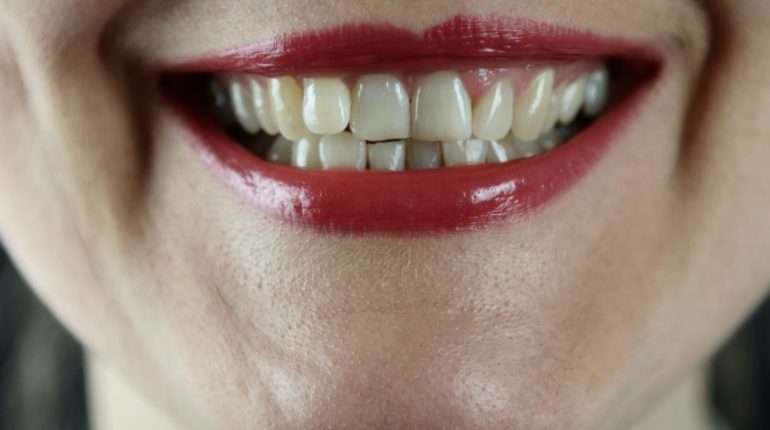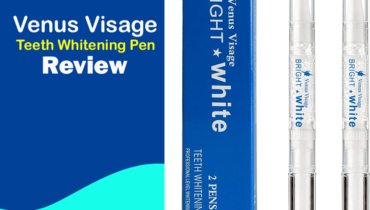You walk out of the dentist’s office feeling like a million bucks after getting your teeth all sparkly and white. But then, out of the blue, dehydration sneaks in like an uninvited guest to rain on your parade. Not cool, right?
How to Rehydrate Teeth After Whitening? Drink water, avoid acidic or staining foods, use fluoride toothpaste, and apply fluoride treatments. Now detailed explained it,
Dehydration might not show its true colors right away, but it can throw a wrench into your dental health game. Those little white spots popping up or feeling a bit uncomfortable? Yep, dehydration could be the culprit behind those issues.
It’s not all bad news. There are some nifty tricks to fix this and keep your teeth happy post-whitening. Because let’s face it, that dazzling smile is worth maintaining, and we’ve got your back with tips to keep it shining while keeping your teeth in their best shape.
How to Rehydrate Teeth After Whitening: Understanding Dehydration in Teeth After Whitening
Definition and Causes of Dehydration
When the natural moisture and vital minerals in the enamel are gone, teeth become dehydrated, which can cause a number of problems after bleaching. Applying bleaching substances to the enamel to eliminate stains is a common step in whitening procedures. But this procedure may unintentionally dry out the teeth, creating a transient imbalance in moisture content.
Causes of Dehydration
Think of those whitening agents as super absorbent sponges—they’re fantastic at soaking up stains and making your teeth shine. But here’s the catch: they’re not selective about what they absorb. Along with those stains, they also pull out some of the moisture from your teeth.
Now, the duration of your whitening session and how potent those agents are? They’re like the directors of this whole show. The longer and stronger they are, the more moisture they might yank out from your teeth. Whether you’re in the dentist’s chair or doing the whole whitening thing at home, these factors team up to decide just how dehydrated your teeth might feel afterward. It’s a bit like a tag team between the strength of the agents and the time they spend doing their thing on your teeth.
How to Rehydrate Teeth After Whitening: Differentiating Dehydration from Decalcification
Let’s dive deeper into the differences between dehydration and decalcification when it comes to your teeth.
Your teeth will feel slightly dry and devoid of essential minerals as a result of dehydration. The temporary white patches you see after tooth whitening could be caused by this. Conversely, decalcification is a little more dangerous. It happens when your enamel loses calcium and phosphate, weakening it and raising the possibility of deterioration. These areas could persist and become troublesome if they are not given enough attention.
Knowing the difference between the two is like having a special key. While being hydrated helps with both, in order to prevent further damage, your dentist may need to focus a little more on the decalcification procedure.
Getting the hang of these distinctions helps you navigate the dental world. By keeping your teeth hydrated after whitening, you’re not just replenishing moisture—you’re also helping maintain the strength of your enamel, ensuring your smile stays healthy and radiant.
How to Rehydrate Teeth After Whitening: Signs and Symptoms of Dehydrated Teeth
Blotchy Teeth After Zoom Whitening
You know Zoom whitening, right? That speedy, teeth-transforming wizardry? Well, brace yourself because sometimes, it brings along a surprise: blotchy teeth. You’re all hyped for the Zoom whitening magic, and then, bam! You notice these blotches on your teeth, totally unexpected.
These blotches might show up because the whitening stuff wasn’t spread out evenly or maybe your teeth got a bit dried out during the process. But guess what? Most of the time, they’re just your teeth signaling, “Hey, we’re feeling a bit dry over here!”
So, if you spot these patches after your Zoom whitening adventure, don’t sweat it! It’s like your teeth whispering, “A little hydration, please?”
It’s a friendly nudge from your teeth, a sign they need a bit more love. No need to hit the panic button—just show your teeth some extra care and hydration, and they’ll likely bounce back looking fabulous soon enough.
Understanding Dehydrated Teeth
Dehydration of teeth, a common aftermath of whitening procedures, occurs when the teeth lose moisture and essential minerals. This dehydration typically manifests as various signs and symptoms, affecting both the appearance and sensation of your teeth.
Recognizing Dehydrated Teeth After Whitening
Your teeth start behaving a little strangely right after getting them whitened. They’re trying to tell you something, even if they’re not hosting a party.
You might notice these changes, like these sneaky white spots or funky patches on your teeth. On top of that, they might feel more sensitive or uncomfortable, and your mouth could have that overall dry feeling. It’s like your teeth are waving little flags saying, “Hey, we need some help here!”
Surprisingly, these changes are pretty normal after a teeth-whitening gig. It’s like your teeth sending a Morse code for a little extra care.
Understanding these signs is like having a secret message—it’s time to step up with some extra hydration and care. Giving your teeth a little TLC can work wonders, getting them back to their happy, hydrated state in no time.
How to Rehydrate Teeth After Whitening: Effects of Dehydration on Oral Health
Do White Spots on Teeth Go Away After Whitening?
Imagine playing detective with your teeth after a whitening session. You spot these white spots and wonder, “Are they sticking around or just passing through?”
Those sneaky white spots often appear because your teeth got a bit dehydrated during the whitening. It’s like they lost some essential minerals, leading to this thing called demineralization.
Here’s the scoop: some of these spots might decide to do a disappearing act as your teeth rehydrate naturally. It’s like a vanishing act right there in your mouth! But, for those tougher or deeper spots, they might need a little extra attention.
Think of it as your teeth leaving clues, saying, “Hey, can you give us a hand here?” Those deeper spots might need your dentist’s special touch to help them fade away.
Duration of Tooth Porosity After Whitening
After a whitening procedure, picture your teeth as these incredibly absorbent sponges that are wide open and prepared for anything. They seem to be demanding, “Come at me, world!”
Your teeth lose some of their moisture during the whitening process, which results in this increased porosity. They seem to be embarking on a new adventure during this phase where they are most receptive.
Your teeth are more porous and may feel slightly different during this brief period, similar to a transitory chapter in their life. Don’t worry, though—this is only a temporary phase they’re going through.
Imagine it as your teeth going through a sensitive phase, similar to when they are discovering new territory. Like, “We’re in uncharted territory!” But in due course, they will revert to their typical selves.
Your teeth are more porous and may feel slightly different during this brief period, similar to a transitory chapter in their life. Don’t worry, though—this is only a temporary phase they’re going through.
Methods to Close Pores on Teeth After Whitening
After whitening, think of your teeth like they’re missing their cozy blanket. They’re a bit exposed and need some protection to stay strong and avoid getting stained or dried out.
We’ve got some cool tricks to help out. Ever heard of giving your teeth a mineral boost? That’s remineralization—it’s like a little patch-up job for those tiny holes. Then there’s fluoride, which acts like a superhero shield for your teeth. Oh, and special toothpaste? It’s like a superhero’s sidekick that helps seal up those holes tight.
Your regular brushing routine and steering clear of foods and drinks that love to stain after whitening can really lend a hand.
Understanding how long those white spots might stick around, how much time your teeth might stay a bit open, and having a plan to patch up those holes after whitening—that’s how you keep your smile shining and your teeth feeling super happy.
How to Rehydrate Teeth After Whitening: Rehydrating Teeth After Whitening

1.How to Hydrate Teeth?
Rehydrating teeth after whitening involves replenishing lost moisture and essential minerals, aiding in restoring their natural balance. Here are effective ways to hydrate teeth:
After whitening, picture your teeth feeling a little bit dry. “Hey, we need a little moisture boost!” they exclaim.
- Increase Saliva Production
Chewing sugar-free gum or consuming foods that stimulate saliva production, like apples or carrots, helps maintain moisture in the mouth.
- Stay Hydrated
Drinking plenty of water throughout the day ensures your body stays hydrated, benefiting your teeth as well.
- Use Fluoride Mouthwash
Rinse with a fluoride mouthwash recommended by your dentist. Fluoride aids in remineralization and strengthens enamel.
2.How to Rehydrate Teeth
Here are three quick ways you may support them:
- Maintain Proper Hygiene
Firstly, consider saliva to be your teeth’s natural source of moisture. Chewing sugar-free gum or consuming crisp foods like carrots or apples might give you a more juicy tongue. It’s similar to sipping on something to keep your teeth comfortable.
- Dietary Adjustments
Secondly, remember to drink water throughout the day. It’s not just good for you; it’s like a refreshing gulp for your teeth too.
- Avoid Staining Agents
Thirdly, use fluoride mouthwash recommended by your dentist. It’s like a superhero shield for your teeth, making them stronger and more resilient.
So, it’s like a simple three-step routine—boost saliva, drink water, and give your teeth some fluoride love. These little tricks can really help your teeth get that moisture back and keep them feeling tip-top.
3.Rehydrating Teeth Enamel
When it’s about giving your enamel a hydration boost, you’ve got two heroes:
- Fluoride Treatments
First, there’s the fluoride treatments from your dentist. They’re like the big guns for your enamel, making it stronger and helping it rebuild.
- Enamel-Boosting Toothpaste
Then, there’s enamel-boosting toothpaste—it’s like a sidekick for your enamel, giving it that extra boost to be tougher.
So, think of these treatments as the dream team for your enamel—fluoride as the star player and special toothpaste as the trusty backup. They work together to amp up your enamel’s strength, keeping your teeth feeling super sturdy.
4.Addressing Spotty Teeth After Whitening
After whitening, you spot these patches on your teeth. It’s like a little surprise your teeth are showing off!
These spots could mean your teeth are a bit dry and their protective layer (the enamel) has some tiny gaps. But don’t fret! By using those hydration tricks we talked about, you’re basically giving your teeth a mini spa day. It’s like hydrating them slowly to even things out.
Not only does this help those spots fade away, but it’s like giving your whole mouth a high-five for staying healthy. It’s like fixing those spots while keeping your smile strong and happy for the long run.
How to Rehydrate Teeth After Whitening: Duration and Process of Rehydration
Understanding Teeth Pores
Teeth pores refer to microscopic openings on the tooth’s surface. These pores can become more apparent and enlarged due to dehydration, especially after whitening treatments. Increased porosity makes teeth vulnerable to external substances, potentially causing discoloration or patchiness.
Addressing Patchiness After Whitening
Patchiness post-whitening can result from uneven distribution of the whitening agent or dehydration. Rehydration plays a pivotal role in minimizing these patches as it helps even out the enamel’s texture and color. Consistent rehydration practices gradually assist in smoothing out these uneven areas, restoring a more uniform appearance to the teeth.
Duration of Tooth Pores After Whitening
Teeth can remain porous for a variable period after whitening, often influenced by the method used and individual factors. While immediate post-whitening pores might gradually decrease in size, the duration can vary among individuals. Maintaining a rehydration routine significantly contributes to closing these pores and restoring the tooth’s natural protective barrier.
Understanding the nature of teeth pores, addressing patchiness caused by dehydration, and acknowledging the variable duration of tooth porosity post-whitening empowers individuals to adopt appropriate rehydration strategies and anticipate the gradual improvement in their tooth’s appearance and texture.
How to Rehydrate Teeth After Whitening: White Spots After Whitening: Causes and Concerns
White spots appearing after whitening procedures can result from various factors, including:
- Dehydration
The whitening process can dehydrate teeth, leading to demineralization and the appearance of white spots.
- Uneven Whitening
Improper application of whitening gel or uneven distribution of the bleaching agent can result in irregular spots.
- Calcium Deposits
Some white spots might also stem from calcium deposits on the enamel’s surface.
White Spots After Zoom Whitening
After a fast Zoom whitening session, you might notice some white spots on your teeth. It’s like they’re saying, “Hey, here we are!”
This happens because the fast and intense whitening can make your teeth a bit thirsty, and when they get dehydrated, those spots become more noticeable or new ones decide to pop up.
So, it’s like your teeth are showing off these spots after their quick makeover. But hey, it’s just a temporary thing—they’re still adjusting after the speedy whitening ride.
Preventing White Spots on Teeth After Whitening
- Rehydration Practices
To deal with those white spots after whitening, the number one thing is giving your teeth a good drink. Think of it like your teeth saying, “We need some moisture!”
So, by giving them that hydration boost, you’re basically telling those spots, “Time to fade away!” It’s like the ultimate weapon against those pesky white spots.
- Proper Whitening Techniques
When you’re whitening your teeth, whether with the dentist or at home, remember this: follow the instructions!
At the dentist, they’re the pros. And if you’re doing it yourself at home, those instructions on the box? They’re like your little helpers!
Just make sure you put the whitening stuff on just like they say. It’s what your teeth need. Following those rules, whether at the dentist or doing it yourself, gets you that bright smile hassle-free!
- Post-Whitening Care
One—fluoride treatments. They make your teeth strong.
Two—use special toothpaste that helps your teeth rebuild.
Three—eat foods that make your teeth happy and strong.
It’s like a three-step routine after whitening—fluoride, special toothpaste, and good foods. These simple steps keep your smile shiny and your teeth feeling super tough.
Conclusion
After getting that sparkling smile from whitening, your teeth might get a bit thirsty. That can cause those white spots and make your teeth more holey.
But here’s the trick—giving your teeth a drink! Get that spit going, use fluoride, brush well, and pick tooth-friendly foods.
By doing these, you’re saying, “Bye-bye, white spots!” It’s not just a quick fix—it’s about keeping your teeth happy and strong for the long haul.
So, a little care keeps that bright smile shining and your teeth feeling tip-top.


